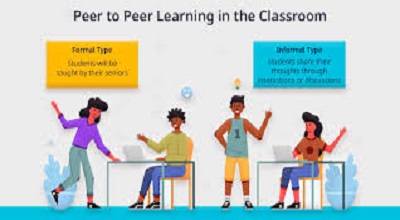Peer-to-Peer Learning
Peer-to-Peer Learning: Peer-to-peer (P2P) learning is an educational approach where individuals learn from each other through collaboration, discussion, and shared experiences. Unlike traditional teacher-centered methods, P2P learning emphasizes active participation, knowledge exchange, and mutual growth. This method is widely used in classrooms, workplaces, and online communities to enhance engagement and retention.
In this comprehensive guide, we will explore:
- The definition and importance of peer-to-peer learning
- Different models and strategies
- Real-world examples across various fields
- Benefits and challenges
- Latest trends and technologies in P2P learning
- How to implement it effectively
By the end, you’ll have a deep understanding of how P2P learning can transform education and professional development.
What is Peer-to-Peer Learning?
Peer-to-peer learnings is a collaborative learning method where individuals of similar knowledge levels teach and learn from each other. It fosters:
- Active engagement
- Critical thinking
- Social interaction
- Deeper understanding
Unlike traditional learning, P2P learning is decentralized, meaning there is no single authority figure. Instead, learners exchange knowledge through discussions, group projects, and feedback sessions.
Key Characteristics of P2P Learning
✅ Collaborative – Learners work together to solve problems.
✅ Interactive – Encourages discussions and debates.
✅ Student-Centered – Focuses on learners’ needs and experiences.
✅ Flexible – Adaptable to different learning environments.
Why is Peer-to-Peer Learnings Important?
P2P learning has gained popularity due to its effectiveness in:
- Enhancing retention (learners remember 90% of what they teach others).
- Building communication skills through discussions.
- Encouraging teamwork and leadership.
- Promoting inclusivity by valuing diverse perspectives.
Studies show that students in P2P environments perform 20-30% better than those in traditional lecture-based settings.
Models of Peer-to-Peer Learning
Several structured models facilitate P2P learning:
A. The Jigsaw Method
- Learners become “experts” on different topics and teach their peers.
- Example: In a history class, each student researches a different event and presents it.
B. Think-Pair-Share
- Students think individually, discuss in pairs, and then share with the class.
- Example: A teacher poses a math problem, students solve it in pairs, and then explain their solutions.
C. Peer Teaching
- Advanced learners guide beginners.
- Example: Senior medical students tutoring first-year students.
D. Study Groups
- Small groups meet regularly to review material.
- Example: College students forming a study group for exam preparation.
Peer-to-Peer Learning Strategies
To maximize effectiveness, educators can use:
✔ Structured Discussions – Guided Q&A sessions.
✔ Role-Playing – Simulating real-world scenarios.
✔ Peer Assessment – Students evaluate each other’s work.
✔ Online Forums – Platforms like Reddit or Discord for knowledge sharing.
Real-World Examples of Peer-to-Peer Learnings
A. In Schools & Universities
- Harvard’s Peer Instruction – Students discuss conceptual questions in groups.
- Khan Academy’s Peer Tutoring – Students help each other with math problems.
B. In Corporate Training
- Google’s “Googler-to-Googler” Program – Employees teach each other skills.
- LinkedIn Learning Groups – Professionals exchange industry insights.
C. In Online Communities
- Stack Overflow – Developers help each other with coding problems.
- Duolingo Forums – Language learners practice together.
Benefits of Peer -2- Peer Learning
✅ Higher Engagement – Learners are more involved.
✅ Improved Retention – Teaching reinforces knowledge.
✅ Cost-Effective – Reduces dependency on instructors.
✅ Builds Soft Skills – Communication, teamwork, and leadership.
Challenges and Solutions
| Challenge | Solution |
|---|---|
| Unequal Participation | Assign roles to each member |
| Lack of Structure | Provide clear guidelines |
| Knowledge Gaps | Pair advanced & beginner learners |
| Resistance to Change | Demonstrate success stories |
Latest Trends in Peer-to-Peer Learnings
- AI-Powered Peer Learning – Chatbots facilitating discussions.
- Gamification – Leaderboards and rewards for participation.
- Microlearning Groups – Short, focused peer sessions.
- Virtual Reality (VR) Study Groups – Immersive collaborative learning.
How to Implement Peer-to-Peer Learnings Effectively?
- Set Clear Objectives – Define what learners should achieve.
- Choose the Right Model – Jigsaw, Think-Pair-Share, etc.
- Use Technology – Slack, Zoom, or LMS platforms.
- Encourage Reflection – Let learners assess their progress.
- Provide Feedback – Ensure continuous improvement.
Conclusion
Peer-to-peer learning is a powerful, scalable, and engaging educational approach. Whether in schools, workplaces, or online communities, it fosters deeper understanding and collaboration. By leveraging the latest trends and technologies, educators and organizations can create dynamic learning environments that drive success.
